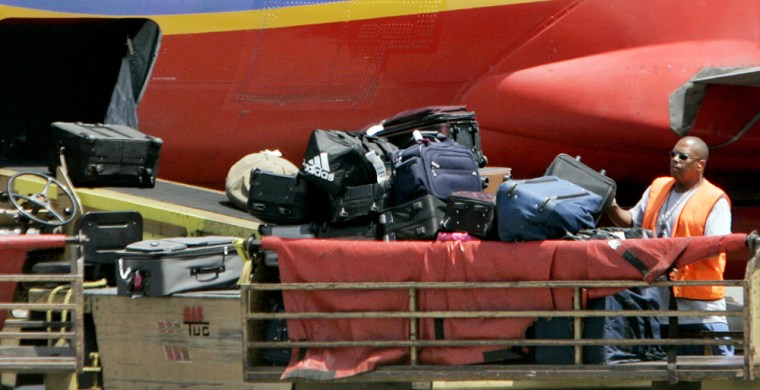U.S. airlines’ luggage problems just exploded. New rules limiting carry-on items have added thousands of checked bags into a system that was already overloaded and inefficient. According to the U.S. Department of Transportation, more than 3 million pieces of luggage were reported lost, damaged, delayed or pilfered during the first six months of 2006, up from 2.7 million pieces of luggage during the same period in 2005. This is more than a 10 percent increase in lost bags in just one year.
The airlines tend to report these figures in ways that make the problem seem insignificant, saying things like “only” 6.5 reports were lodged for every 1,000 passengers during July 2006. In reality, that number is staggering. Think about it. That’s one bag lost, damaged, delayed (or pilfered!) for every 154 passengers, or about one bag per medium-sized planeload.
And these are the figures for the month before the crackdown on carry-on luggage that followed the discovery of the London bomb plot in August. The figures for August and September are going to skyrocket. I guarantee the situation will go from bad to worse.
Is there a way to limit the chances of losing your luggage? And when your luggage doesn’t show up on the carousel, is there anything you can do?
Here are the basic rules.
1. Plan ahead for problems
When you pack your carry-on bags for an extended trip, be sure to pack a change of clothing for one day as well as necessary toiletries (small, travel-size containers of liquid- and gel-based toiletries are now permitted on board the aircraft). For the most part, airlines manage to get lost luggage reunited with its owners within 24 hours, so this is your simplest insurance policy.
2. Pay attention to the destination
Check your luggage tag to make sure your luggage is checked through to the right airport. Believe it or not, this is the biggest reason that bags go astray. More and more travelers are now checking their luggage at curbside, compounding the opportunity for tagging errors.
3. Check your luggage in on time
Today’s airports have luggage check-in rules that, theoretically, allow time for sorting of luggage and delivery to the correct aircraft. Don’t push the system. The smallest delay can have serious consequences when your luggage is cruising down the conveyor belt and selected for security examination with little time to spare.
4. Identify your luggage inside and out
Few travelers put identification and destination information inside their luggage, but this small effort will be amply rewarded if your luggage tag gets torn off. Especially if you don’t know exactly what your luggage looks like — and many travelers don’t (ask anyone who’s stood in a lost-luggage line). So take a moment to note the luggage maker (TravelPro, Samsonite, Delsey, American Tourister, etc.). Also take a good look at the color. Is it dark blue or is it black? Is that a stripe or a wavy line? Better yet, if you have a camera phone, take a picture of your bag before you hand it over.
5. Fill out all forms at the airport
If your luggage doesn’t show up on the carousel, spring into action. Many times, airline personnel will explain that the luggage has been located but will be delayed until the next flight. If you have the time, wait. If not, fill out the appropriate lost luggage forms at the airport, and the airline will get the baggage to your home or hotel.
6. Ask what the airline can do for you
Baggage service offices are full of surprising information. For example, if your luggage is going to be delayed for a while, some airlines in some locations will issue petty cash to purchase toiletries and sundries. Others will provide coupons for rental of special clothing and equipment such as ski and snowboard outfits. I’ve heard stories of airlines picking up tuxedo rentals for special occasions. If your luggage is damaged, point out the damage and the airline will have your suitcase repaired. Some offices even have a supply of replacement suitcases in their back room, which can solve the problem on the spot.
7. Make a claim
In the rare case of truly lost luggage, the airline’s liability is limited to $2,800 for domestic flights. International liability limits are less generous. Some credit cards and travel insurance policies cover lost and damaged luggage — read the fine print. Homeowner’s and renter’s insurance normally cover your property, too, even when you are in transit on public transportation. Susan Foster, author of “Smart Packing,” suggests that travelers make a packing list that can be referenced if there is a need for insurance reimbursement.
Lost luggage is a growing problem. You never know when you will find yourself watching an empty baggage carousel, so plan ahead, pack light and remember, you can always buy a toothbrush and a new pair of socks at your destination.
